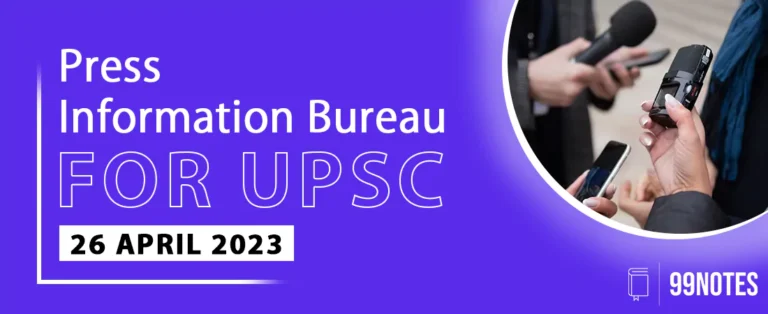5 July 2024 : The Hindu Editorial Analysis
1. Computer literacy in India needs a reboot
(Source – The Hindu, International Edition – Page No. – 8)
| Topic: GS2 – Social Justice – Education |
| Context |
|
Introduction
- Computer literacy is vital in today’s digital world, especially as critical services like banking, health care, and government services have become digital.
- It involves the knowledge and ability to use computers and technology efficiently, which enhances individuals’ access to essential services and improves their quality of life.
- The COVID-19 pandemic highlighted the necessity of computer and Internet access for activities like ordering groceries, online education, and managing banking and health-care services.
- Recognizing this, the Indian government launched the Digital India campaign in 2015 to transform the country into a digitally empowered society.
Computer Literacy in India
- Computer education is being integrated into the formal education system, starting from an early age in schools.
- Numerous skill development and vocational training programs focus on enhancing computer literacy among youth and adults, targeting underprivileged and marginalised communities to bridge the digital divide.
- The National Sample Survey Office’s 78th round of the Multiple Indicator Survey (conducted in 2020-21) provides data on computer literacy, defining it as the ability to use a computer.
Survey Findings
- Overall computer literacy among individuals aged 15 years and above increased from 18.4% in 2017-18 to 24.7% in 2020-21.
- In rural areas, computer literacy rose from 11.1% to 18.1%, while in urban areas, it increased from 34.7% to 39.6%.
- These figures are concerning and pose challenges to India’s digital aspirations, as a significant portion of the population, particularly in rural areas, remains digitally excluded.
Inequality Across Age Groups
- Computer literacy varies across age groups, with higher rates observed among younger demographics.
- The overall rate of 24.7% masks significant disparities, with the highest literacy rate among individuals aged 20-24 years (45.9%) and the lowest among those aged 65-69 years (4.4%).
- Even among the youngest age cohorts, computer literacy has not reached 50%.
- The rate among individuals aged 20-39 years, typically in their careers or job searching, stands at just 34.8%.
Regional Disparities
- There is significant variation in computer literacy among individuals aged 20-39 years across Indian States, with a gap of 55.1 percentage points between the highest rate in Kerala (72.7%) and the lowest in Assam (17.6%).
- Economically disadvantaged States like Assam, Bihar, Madhya Pradesh, Jharkhand, Uttar Pradesh, Odisha, Chhattisgarh, and Rajasthan have less than 30% computer literacy in this age group.
- This exacerbates the development gap between economically prosperous and disadvantaged States, hindering inclusive growth.
Challenges and Barriers
- Many schools and colleges in India lack the necessary infrastructure and qualified teachers to provide adequate computer training, contributing to deficiencies in computer literacy among young students and new graduates.
- Among older age groups, computer illiteracy may be due to a lack of motivation or limited access to learning resources, with older demographics often less enthusiastic about adopting new technologies.
Implications of Computer Illiteracy
- Computer illiteracy in today’s digital society severely restricts individuals’ opportunities and experiences, leading to limited job prospects, social isolation, financial exclusion, and restricted access to information resources.
- As Artificial Intelligence advances, employers increasingly seek individuals with computer skills capable of executing complex tasks.
- Studies have shown that computer skills enhance employability and worker productivity, with those lacking these skills facing significant disadvantages.
Socio-Economic Inequalities
- Computer literacy exacerbates socio-economic inequalities by creating a digital divide and skill gap, leading to unequal job market opportunities.
- Individuals with better computer skills can leverage technology for personal and professional development, while those lacking these skills face barriers in accessing essential services, participating in the digital economy, and advancing their careers, perpetuating economic disparities.
Recommendations for Improvement
- Schools should ensure that students graduate with computer literacy skills to fully participate in rapidly changing economies.
- The government should allocate resources to train computer personnel and ensure sufficient staffing levels in schools.
- Targeted programs for older individuals outside the formal education system are essential, involving local governing bodies and non-governmental organisations to empower older individuals with computer literacy skills.
- The government should conduct thorough reviews of computer literacy initiatives and develop strategies to achieve higher literacy rates and reduce disparities.
Conclusion
- While India has made progress in computer literacy, significant disparities remain in the level and distribution of computer literacy across States.
- Addressing these disparities is crucial for inclusive growth and development, requiring sustained efforts from the government, private sector, and civil society stakeholders to bridge the digital divide and foster inclusive growth.
| PYQ: Q.1 Has digital illiteracy, particularly in rural areas, coupled with lack of Information and Communication Technology (ICT) accessibility hindered socio-economic development? Examine with justification. (250 words/15m) (UPSC CSE (M) GS-2 2021 Q.2 How have digital initiatives in India contributed to the functioning of the educational system in the country? Elaborate your answer. (250 words/15m) (UPSC CSE (M) GS-1 2020) |
| Practice Question: Discuss the significance of computer literacy in India’s digital transformation journey, highlighting the regional and age group disparities. What measures should be taken to bridge the digital divide and promote inclusive growth in the country? (250 Words /15 marks) |
2. The shape of a five-year climate agenda for India
(Source – The Hindu, International Edition – Page No. – 8)
| Topic: GS2 – Governance |
| Context |
|
Introduction
- The new government’s approach to climate action will impact every ministry and sector, shaping India’s sustainable economic path, global positioning, and fight for climate finance and justice over the next five years.
India’s Climate Transformation
- Over the past decade, India has evolved from a hesitant participant in global climate discourse to a bold leader, establishing significant global institutions like the International Solar Alliance, the Coalition for Disaster Resilient Infrastructure, and the Global Biofuels Alliance.
- Under its G-20 presidency, India shaped the Green Development Pact.
| Green Development Pact: |
|
- India has set ambitious emission mitigation targets, including the 2070 net-zero target and ambitious Nationally Determined Contributions, acknowledging the importance of absolute emission reductions.
- Domestic economic policies now prioritise sustainability, illustrated by the creation of an Indian emissions carbon trading scheme intended to operate for 30-40 years.
Goals for the Next Five Years
Go Higher: Strengthening Global Leadership
- India should aim to host major international climate summits, such as the United Nations Conference of Parties in 2028, aiming for success comparable to its G-20 Presidency.
- India needs to decide on significant global commitments, such as no new investment in oil and gas post-2030 and securing substantial adaptation finance for developing countries.
- Achieving consensus on these issues requires four to five years, so India should start forming alliances and addressing concerns now.
- India must continue advocating for equity in international forums and establish leadership in global institutions to secure climate finance.
Go Wider: Expanding Sectoral Targets
- Beyond the power sector, India should set and communicate sectoral emission reduction targets, such as zero-carbon targets for private mobility, including two- and four-wheelers.
- This initiative will not only boost urban mobility but also enhance rural mobility, create jobs in clean energy and sustainability, and drive economic growth.
- Clear policy goals have historically prompted industries and stakeholders to act, and the upcoming Nationally Determined Contributions for 2035 present an opportunity to expand India’s energy transition targets.
State-Level Plans and Coordination
Go Deeper: Enhancing Sub-National Climate Action
- Sub-national climate action and resilience should be a priority for the new government term, with several states already making progress towards net-zero plans.
- Organisations like the Council on Energy, Environment and Water are supporting state-level net-zero plans through long-term climate and energy modelling.
- The government should create a Centre-State coordination group, incentivize state-level climate actions through the Sixteenth Finance Commission, integrate scientific modelling in policymaking, and facilitate unified data measurement, reporting, and verification architecture at the state level.
- This approach does not centralise climate actions but ensures better coordination among states while respecting their autonomy.
Conclusion
- The new government should aim to elevate India’s global climate leadership over the next four to five years, looking beyond annual targets.
- India has a seat at most international tables and must now demonstrate its prowess in climate action.
| PYQ: Q.1 Clean energy is the order of the day. Describe briefly India’s changing policy towards climate change in various international fora in the context of geopolitics. (250 Words /15 marks)(UPSC CSE (M) GS-2 2022) Q.2 ‘Climate Change’ is a global problem. How will India be affected by climate change? How Himalayan and coastal states of India are affected by climate change? (250 words/15m) (UPSC CSE (M) GS-3 2017) |
| Practice Question: Discuss India’s evolving role in global climate leadership and outline strategic measures for the government to enhance climate action over the next five years. (250 Words /15 marks) |






